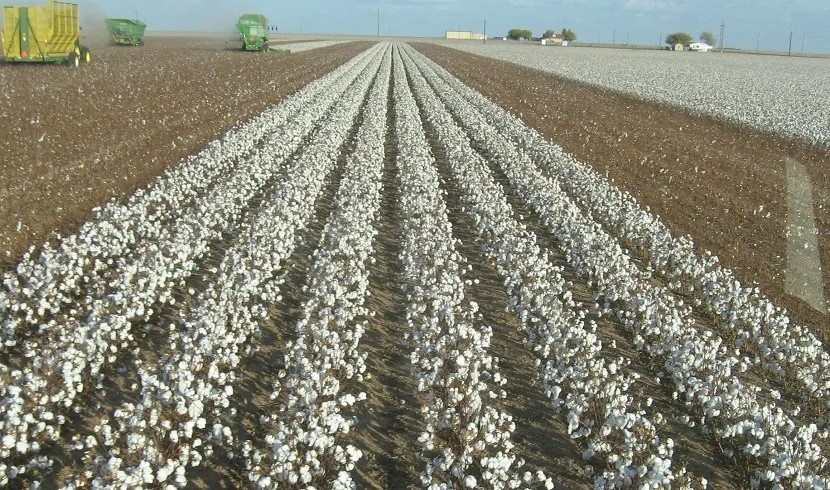
Brazil’s ascent from a net cotton importer to the world’s largest cotton exporter is one of the most compelling success stories in modern agriculture. This transformation, achieved over a few decades, is the result of investments in research and development, widespread adoption of cutting-edge technology, a strong focus on sustainability, and dynamic international trade relationships. The Brazilian cotton sector not only showcases agricultural excellence but also offers a replicable model for nations aiming to bolster their agri-export capacities while maintaining ecological balance.
A journey of breakthroughs
Brazil officially became the world’s top cotton exporter in the 2023–24 marketing year, surpassing the US and accounting for a record 30.5 per cent of global cotton exports in the 2024–25 season. This is a major leap for a country that once relied heavily on imports to meet domestic demand.
This achievement is underpinned by a remarkable improvement in productivity. Cotton yields rose from 1,603 kg/ha in 2015–16 to a record 1,911 kg/ha in 2023–24, with only a slight projected dip to 1,903 kg/ha in 2024–25. This upward trend reflects Brazil’s deep commitment to agricultural research, particularly through the efforts of Embrapa, which has developed region-specific cotton varieties and improved pest and climate resilience.
Table: Growth over the years
|
Year |
Yield (Kg/Ha) |
|
2015-16 |
1,603 |
|
2019-20 |
1,726 |
|
2020-21 |
1,802 |
|
2023-24 |
1,911 |
|
2024-25 (Projected) |
1,903 |
Doing more with less
One of the most striking aspects of Brazil’s cotton success is the 54 per cent reduction in cultivated area despite achieving record-high yields. This points to highly efficient resource utilization, made possible by modern farming techniques, precision agriculture, biotechnology (Bt cotton), and Integrated Pest Management (IPM).
Interestingly, nearly 93 per cent of Brazilian cotton is rainfed, showcasing the sector’s ability to achieve high yields without intensive irrigation. The planted area in 2024-25, however, reached a record 1.945 million hectares, reflecting growing global demand and Brazil’s readiness to meet it.
Sustainability at the core
Sustainability is not an afterthought—it is integral to Brazil’s cotton narrative. As of 2024-25, around 84 per cent of cotton produced in Brazil is certified for environmental and social sustainability. These certifications reflect responsible water and land use, ethical labor practices, and reduced chemical input, aligning Brazilian cotton with the growing global demand for traceable, sustainable raw materials.
Cotton trade
Brazil’s strategic international partnerships have given a boost to the global cotton trade. The country now supplies 40 per cent of China’s cotton imports, a dramatic rise from 6 per cent six years ago. In 2024, China alone accounted for $1.09 billion of Brazil’s $5.15 billion in raw cotton exports. Other major destinations include Vietnam, Bangladesh, Pakistan, and Turkey.
Table: Brazil cotton exports major destinations
|
Country |
Export value ($ bn) |
|
China |
1.09 |
|
Vietnam |
1.01 |
|
Bangladesh |
0.604 |
|
Pakistan |
0.52 |
|
Turkey |
0.461 |
Brazil’s ability to handle high-volume exports is a direct result of investments in transport and logistics infrastructure. In January 2025, the country exported a record 415.6 thousand tonnes of cotton, and while April 2025 saw a 13 per cent year-on-year drop, the total export volume from August 2024 to April 2025 still reached 2.35 million tonnes, only 12 per cent below the previous record.
Table: Brazil’s monthly cotton exports (Jan-March 2025)
|
Month |
Export volume (thousand tonnes) |
|
January |
415.6 |
|
February |
Data not readily available in this specific format |
|
March |
239.1 |
Cotton and food security
Beyond fiber, cotton contributes to food security. For every 1 kg of lint, about 1.25 kg of cottonseed is produced, which can be used as livestock feed or oilseed, adding to the crop’s overall value and utility.
Keys to success
Several factors contributed to Brazil’s cotton revolution:
• Research & innovation: Continuous investment in agronomic research led to the development of high-yield, pest-resistant cotton varieties.
• Technology adoption: From GPS-enabled machinery to genetically modified seeds and IPM, Brazil embraced innovation at scale.
• Sustainability: Certification of 84 per cent of production ensures environmental responsibility, helping Brazil access premium global markets.
• Strong institutions: Organizations like ABRAPA have been instrumental in promoting best practices, sustainability standards, and international outreach.
• Government support: Policy support for R&D and export promotion provided the enabling environment for growth.
• Export infrastructure: Strategic improvements in logistics facilitated massive export volumes.
Lessons for the world
Brazil’s cotton journey offers a blueprint for other developing agricultural economies. The country has shown that with the right mix of science, policy, sustainability, and market integration, it is possible to scale agricultural exports while reducing environmental impact. Its story underscores the value of long-term investment, the power of collaboration, and the critical role of adaptability in a fast-changing global market.
As nations grapple with the twin challenges of feeding growing populations and mitigating climate change, Brazil's cotton success proves that sustainable intensification is not just possible—it’s profitable.












